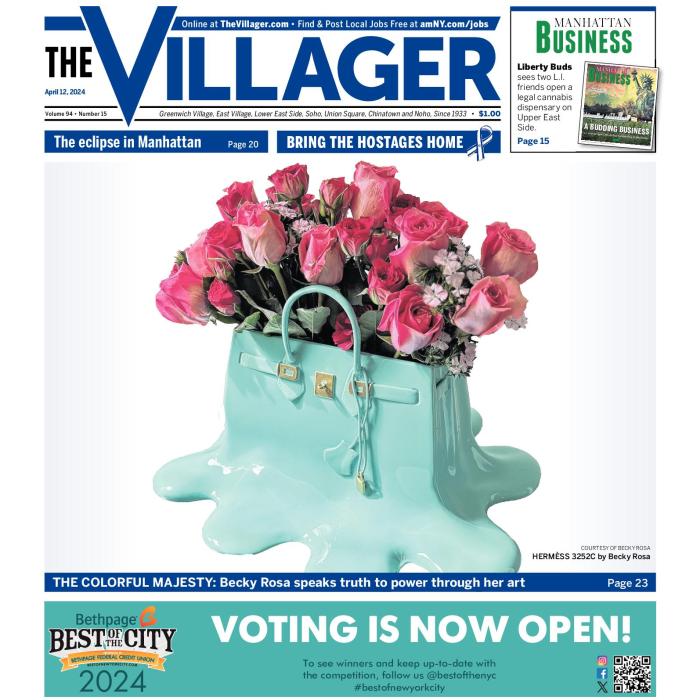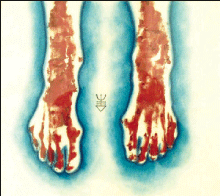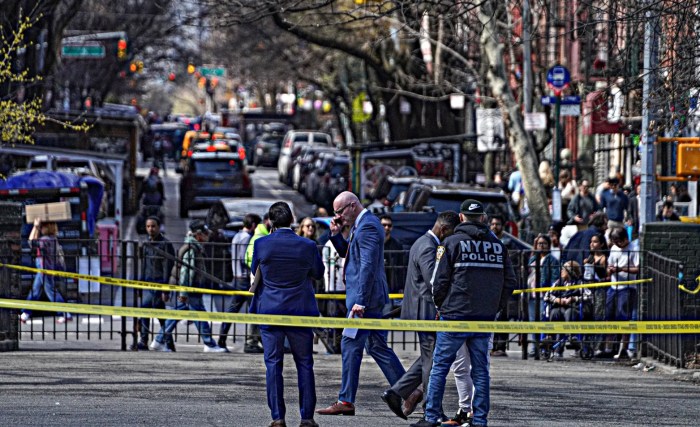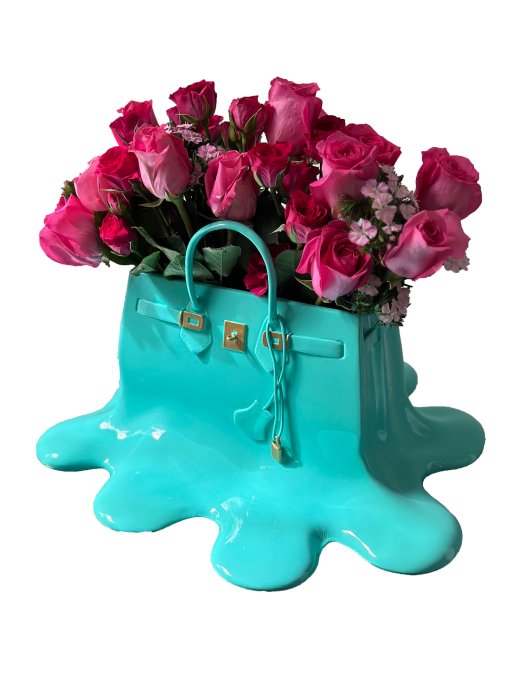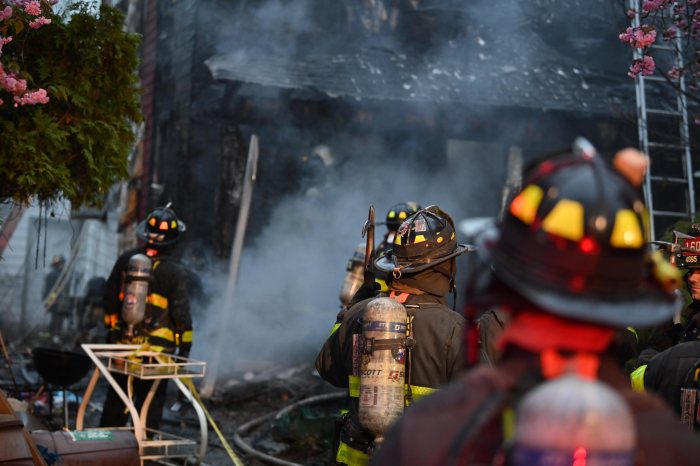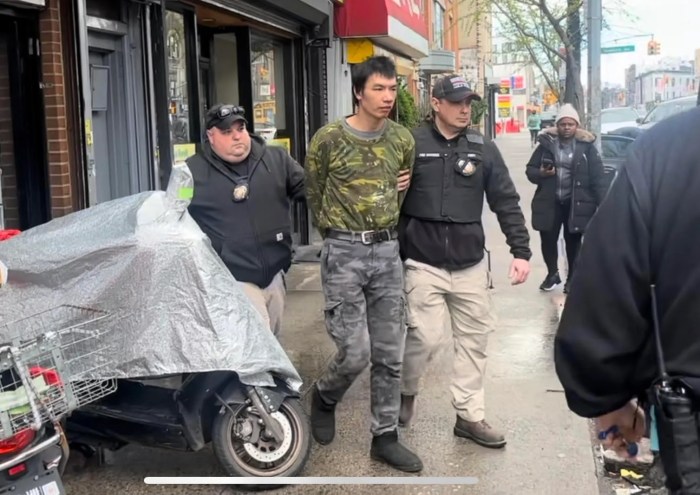By Abby Luby
There’s a lot of creative energy going on within the massive walls of the Westbeth building, where celebrated artists have lived and worked for the last four decades. Now through January 6, you can see the fruits of some of that energy at the Westbeth’s “Annual Holiday Exhibit, Part 2,” (part one was predominantly sculpture), featuring paintings, watercolors and limited edition prints.
Visual artists living and working at Westbeth are guaranteed an annual exhibit in the expansive street level gallery, one of the big perks of getting into Wesbeth, which is highly competitive, so much so that they’ve stopped adding names to the waiting list.
Gallery Director and artist Jack Dowling hung over 70 works in all genres on the walls with great sensitivity that makes the show hum; you’ll find abstracts next to figurative, pastels adjacent to oils and watercolors, younger artists aside well established artists.
Greeting viewers at the entry is “Living Totem,” by Karina Cavat, an oil on wood. This vertical triptych is a swirl of splashy flowers in primary colors emanating from a pale tree form whose base sinks into a plethora of blue and red petunia type flowers. “Carlos, they’re looking at us,” is an absorbing, archival black and white ink jet print by Kenneth Sean Golden with multilayered faces peering out at the viewer. Color explodes with abandon in Christina Maile’s abstract lithograph and ink on paper, “The One Note.” The small and engrossing mixed-media piece by Francis Siegel, “Wurlds,” is more sculptural, with thick layers of lava-like globs oozing between embedded objects.
Evoking loneliness and despair is John Dobbs’ “Ragpicker – Paris, 1961.” A man is hunched over an old pram filled with scraps pushing it right towards us, blazing orange at his back; here Dobbs boldly informs us of the invisible poor. The shadowy “MK” by Jack Dowling is an archival ink jet print of a man’s head and torso surfacing from darkness to distinct earth tones defined in organic shapes.
“Emanation” by Beverly Brodsky is a large abstract painting that skirmishes and vibrates deep reds and greens, punctuated by free flowing forms giving the work an angular depth. The small gem by Paul Muryani, “AB,” is hung on a column that might easily be missed. A red flare jettisons out of black as a meteorite with subtle white dots as stars. Three small watercolors by Gerald Marcus depict landscapes that blithely slip in and out of abstraction while capturing summer country scenes.
Courtesy the artist Jack Dowling, “MK”
Anchoring the show at the far end of the main gallery is Jon D’Orazio’s large seascape “Rocky Gove,” where jagged edged boulders gathers an intense gravity amidst a frothy aqua sea. Nearby the very delicate paper piece by Jean Promutico, “Mountain Pass” has a large auburn horizontal swath spanning the transparent paper which is cut in half. Small, pointillist dark jabs whoosh through as a wave from bottom to top.
“Looking at Matisse,” by the deft hand of Ray Ciarrocchi, captures the stillness of a lazy summer afternoon; a woman lounges, immersed in a book of images while a playful cat is on its back with paws airborne. An almost surreal, faux Grand Canyon is mesmerizing in Kathleen Zimmerman’s “Red Rock Country #4.” Blazing vermillion cliffs dominate the canvas while distant, deep rust colored mountains loom against a pale sky.
Jane Bolmeier stacked six small canvases entitled “Provincetown Bay Scapes”; silky azure skies melt into lavenders, some dotted with the hint of a sail boat or two. In the expressionist style is Tony Candido’s “Untitled,” darkly painted with intense wide brush strokes of a square headed man whose absent gaze freezes a moment of some sudden realization.
“Hepar Magnesie” is an acrylic and pastel of two flattened feet and shins by Tamara Wyndham. Caked, brick red skin surfaces are splotched on the two disconnected limbs jutting out from a blue ‘aura.’ The eighteenth-century chemistry sign for hepar magnesiae is cryptically planted between the two legs, perhaps incanting the compound for its magnetic properties. Jackie Lipton’s two salaciously titled canvases “Red Hot Nipples Red, Red Hot nipples Blue,” are abstracts in predominantly red and blue, whose title directs the eye to circles and cones.
Overall, the wide range of work by this talented artist community is what keeps the viewer engaged throughout this show that is well worth seeing.
